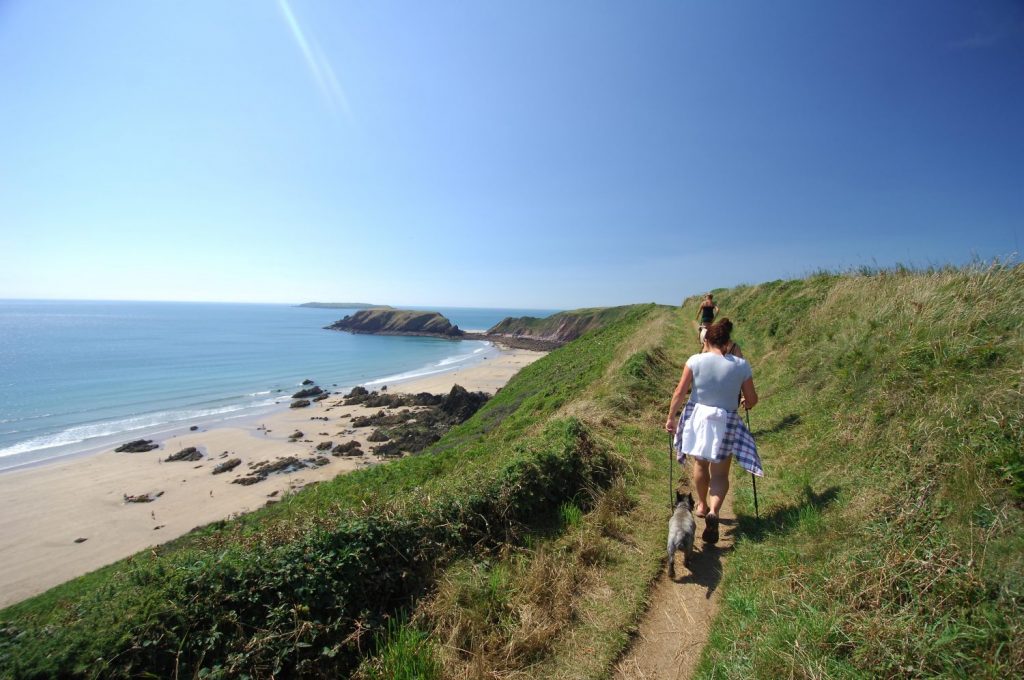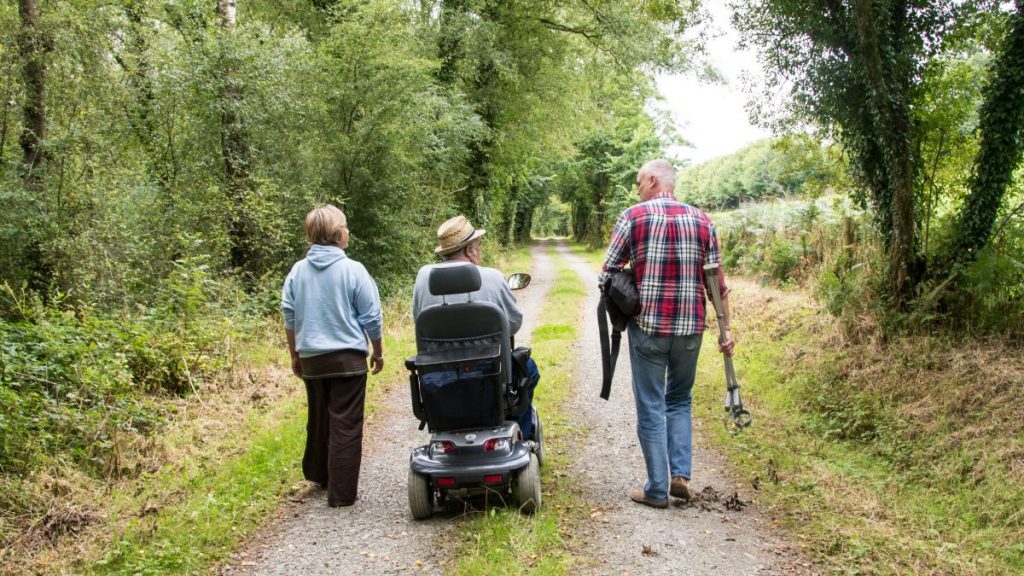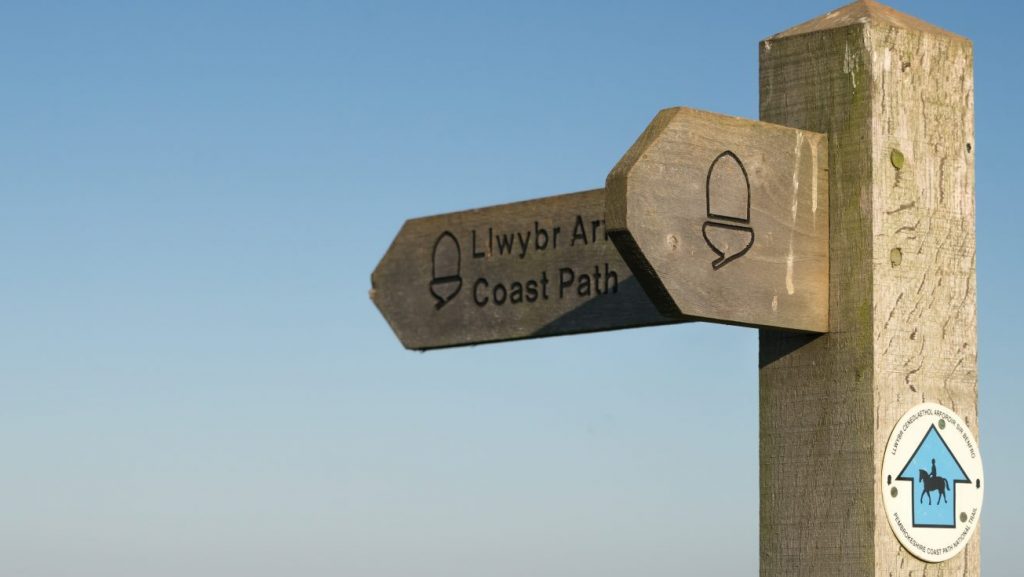DISTANCE/DURATION: 3.0 miles (4.8km). 1 hour 30 minutes.
PUBLIC TRANSPORT: None.
CHARACTER: Easy to moderate – but one steep section, riverside wooded route, can be wet and muddy, 0.3 mile (0.5km) minor road walking.
LOOK OUT FOR: River Gwaun, woodland birds and old stone bridges.
The steep-sided Gwaun valley is a great place to walk at any time of year, but is a special treat in spring. Then the quiet valley is full of bird song and there are plenty of bluebells to soak up early sunshine.
The Gwaun rises in the Preseli and flows to the sea at Fishguard. The town’s Welsh name, Abergwaun, means mouth of the Gwaun.
The valley is a relict of the Ice Age, formed by the huge volumes of meltwater that flowed as the glaciers retreated. The valley’s v-shaped profile suggests that it was cut by water flowing under the ice itself.
The valley is sometimes called the secret cwm, and it runs on its own time. Valley communities refused to accept modernisation of the calendar in the 18th century and the Old New Year, Hen Galan, is still celebrated each January 13th.
The Gwaun meanders through marsh, woodland and water meadows and this route finds its way between old bridges on both banks alongside the fast-flowing river. Look out for woodland birds, like redstarts, nuthatches and sparrowhawks, and dippers alongside the river.
The remains of ancient forests cloak the valley sides. This woodland was managed during two world wars to supply much needed timber, including oak pip props for mining. A railway ran along the valley to take the timber to a sawmill at Pontfaen.
Today, many woodland areas in the Gwaun Valley are managed by local landowners and by the National Park Authority. They are rich in biodiversity, and noted by a variety of lichens and for small animals like the dormouse.
This whole area is rich in history. In Llanychaer’s churchyard stands the mysterious Crucifixion Stone, a monument that dates back 1,200 years or more. Among the images that decorate all its four faces is one of a figure of Christ and a flower.
Older still are the stones of Parc y Meirw (or Field of the Dead), to the north of Llanychaer and not far off this circular route. The Bronze Age site is the only known stone row in west Wales and of its original eight stones, four are still standing.
Find this Walk
Grid ref: SM993351
COUNTRY CODE!
- Enjoy the countryside and respect its life and work
- Guard against all risk of fire
- Leave gates and property as you find them
- Keep your dogs under close control
- Keep to public paths across farmland
- Take your litter home



